11 Types of Landscaping Rocks - How to Choose & Use
Written by Ivy
Dec 28 2022
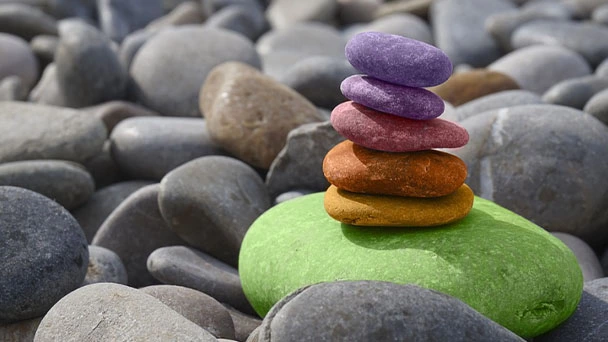
Because you don't know the difference between a landscape rock and rock candy, you might be hesitant to start designing with rocks. If this is the case, we can help.
To keep your outdoor space looking natural, there are many different types of landscaping rocks you can use. Your options are not limited because there are numerous varieties, shapes, and sizes of rocks.
1. Gold Path Decomposed Granite
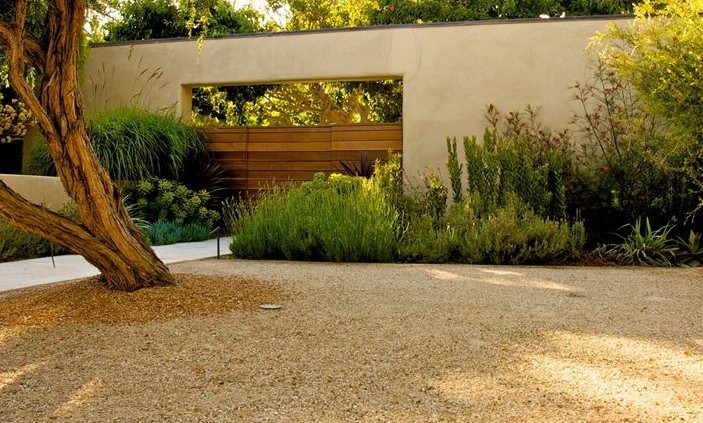
Decomposed granite, as its name implies, is a type of decayed granite rock that is mined, processed, and then used as a ground cover, athletic field surface, pathway, and driving surface.
The decomposed granite's particle sizes can range from very small rock dust particles to 3/8" in size. Additionally, decomposed granite comes in a variety of shades that showcase the stone's true color without the use of dyes or coloring agents. When it comes to decomposed granite paths that give your landscape depth and interest, the majority of homeowners now prefer gold. Due to its fine sand texture, which gives it a natural appearance, Gold Path decomposed granite is also in high demand.
In addition to its many characteristics, this rock type is highly sought after because it is reasonably priced, costing between $40 and $50 per cubic yard. Its low maintenance requirements combined with its durability make it a great option for both residential and commercial landscapes.
2. Gray Pea Gravel
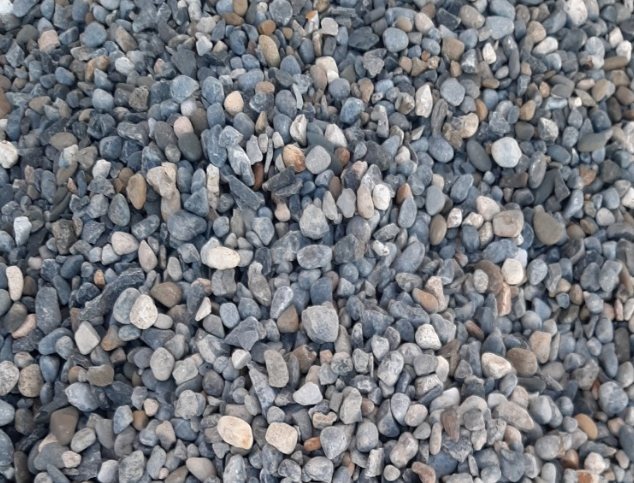
Pea gravel, a smooth, pea-sized stone created by natural weathering, is available in vivid pinks and blues and is frequently found mixed in with grays and earthy browns. These kinds of rocks are primarily used in flowerbeds or gardens to enhance exterior landscapes. Because of its smooth finish, pea gravel is frequently used in driveways, patios, and walkways, among other areas with high foot traffic.
It's also crucial to realize that, if not edged properly, pea gravel's small size can cause it to move easily from its location. For effective edging to prevent any movement, concrete blocks or landscape trim setup should be made, which is why Edenapp advises seeking professional assistance.
Gray pea gravel, which retains heat and moisture and makes an excellent drainage system, contributes to durability in this situation.
Gray pea gravel can range in price from $25 to $69 per cubic yard, but it also depends on how much you need and how much space you want to expand. Gray pea gravel is relatively simple to maintain when it comes to upkeep. The only real challenge you would encounter is when removing snow. You might occasionally need to use a rake to even the rocks.
3. Rainforest River Rocks
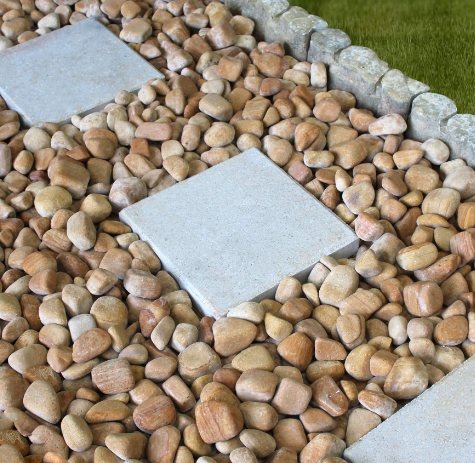
River rocks from the rainforest, naturally formed and tumbled for a smooth texture and a rounded shape, are found close to bodies of water. This type of rock is excellent for both outdoor landscaping and indoor accents because of its wide range of sizes and user-friendly qualities. The price of these rocks can vary from vendor to vendor, depending on their shapes and long-lasting color, and may be between $0.05 and $0.35 per pound.
4. Rainforest Mexican Beach Pebbles
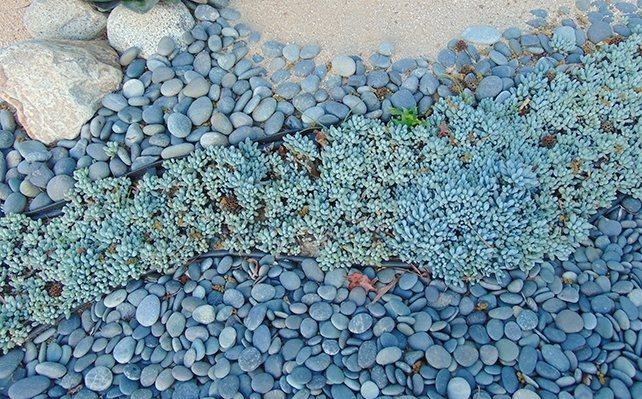
Due to their smooth texture, small size, and wide range of colors, pebbles are frequently used as mulch, direct drainage, and ground cover in water features. The waves tumbled the rocks until they attained a smooth texture, giving the beach pebbles from Mexico's rain forest their natural finish. Rainforest Mexican beach pebbles are consistent and long-lasting, from their colors to their functionality. On different online stores, the price of Mexican beach stones from the rainforest can vary, but it most likely starts at $23.99.
5. Flagstone Stepping Stones
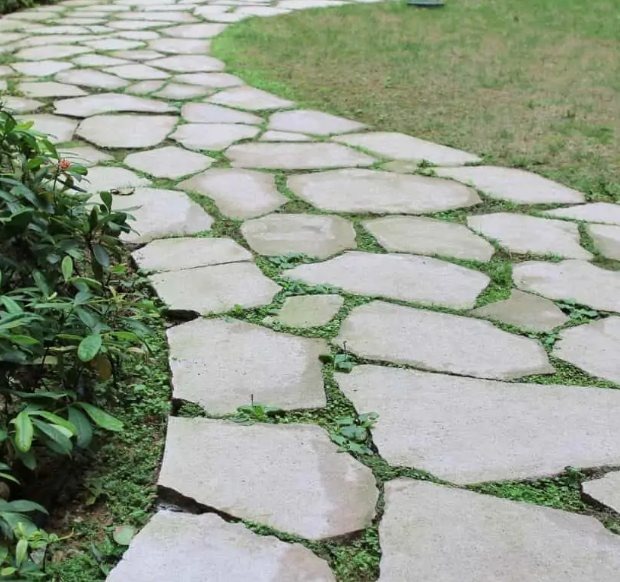
With flagstone stepping stones, you can always create a walkaway that exudes charm, interesting surroundings, and attractive design. It will never let you down. Not to be overlooked is the fun factor that stepping stones also exude.
Flagstone is a sedimentary rock that separates into layers and can be used for rock landscaping. You can choose from a wide range of options with flagstone because it comes in a variety of shapes and patterns, including sandstone, quartzite, paver stones, and irregular, roundish stones. Depending on the customization options, the size, color, and finish of the rock will determine how you add flagstone stepping stones to your walkways. The price per square foot for the flagstone alone ranges from $15 to $20, depending on the particular type.
Flagstone can be used as stepping stones for walkways because it is durable in addition to being very versatile, and the stepping stones are also less likely to slip due to the flagstone's rough texture. You must keep water away from the flagstone to maintain it; not because it might be damaged, but because too much water left on the stone for an extended period of time can cause it to turn discolored. When treating stains, use white vinegar or bleach on the stones after cleaning them with stone cleaner.
6. San Marcos Beach Cobble
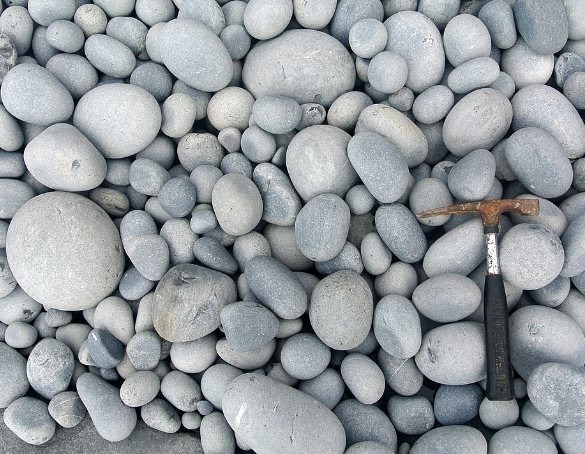
The San Marcos beach cobble, which comes in a variety of colors including light tans, gray, and white multi-colored stone, is best used for pathways, accents, streambeds, and gardens. The granite or basalt used to make the cobbles on the San Marcos beach can range in size from 2.5 to 10 inches. A thorough washing twice a year would be sufficient for maintaining these rocks. You should use a broom to sweep up all the trash and dust before washing the rocks.
7. Southwest Boulder & Stone Decorative Rock
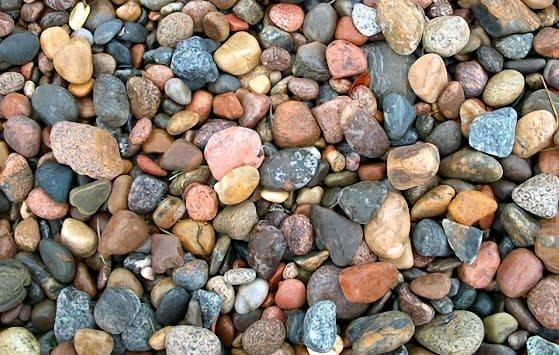
The largest landscaping rock that can help you fill in any space in a large landscape is a boulder. Boulders are a great option if you want to make the rocks in your landscape the main feature. Boulders not only add a distinctive and individual touch to expansive rock gardens, but they can also help support large plants as they grow. These substantial rocks can be incorporated by a property owner into their water features.
Boulders bigger than 16 Prime are available in two basic forms: round and angular. While round boulders have smooth edges and curves, angular boulders have jagged, blasted edges and flat faces. It's also important to note that boulders come in a wide range of colors that most people aren't aware of, including pink, brown, gray, gold, tan, and many other combinations.
You can buy boulders for $43, but the price can also go as high as $200. They are also a great option for property owners or homeowners looking for low-maintenance landscaping rocks.
8. River Rocks
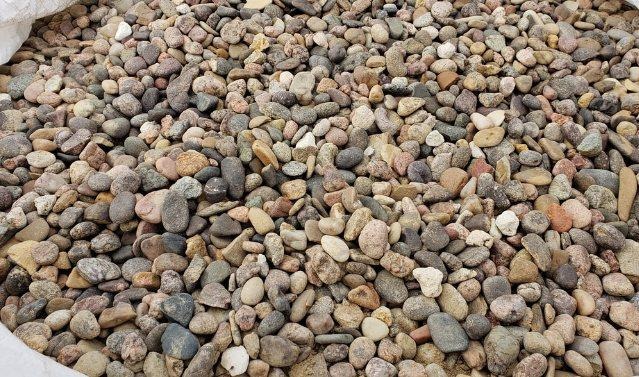
Pea gravels are not as polished as river rocks. More so than the latter, they are also larger. River rocks are the perfect material for retaining walls because of their size and shape, but they are also great for edging flower beds, filling in empty spaces, and building retaining walls.
These particular kinds of rocks have been worn away by silt, water, or sediment. The fact that the speed of the current affects how quickly river rocks form is also intriguing. These river rocks can be used to cover the ground, but they also create an inviting atmosphere when they are incorporated into a water feature. The cost of a ton of river rocks can range from $45 to $270 due to their incredible versatility and amazing shapes and sizes.
When it comes to any of your yard projects, however, it is worthwhile. The river rocks don't typically need to be cleaned, but if you feel the need, you can use a spray or a water hose to do so.
9. Natural Sandstone Landscape Rock
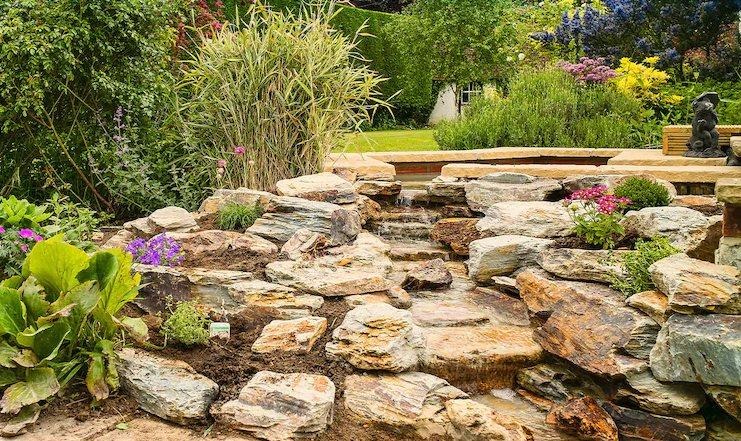
Natural sandstones are sedimentary rocks with small grains that have been cemented by feldspathic, siliceous, or calcareous cementing material. They are a very hard and durable material. These rocks are known as "natural sandstones" because they were created by a natural process. Natural sandstones come in a variety of colors, which also depend on the quantity and kind of minerals in the sand. These rocks have beautiful colors as well as colorful streaks.
Sandstone can be used to build raised garden beds because of its sturdiness and gritty, granular texture, which also gives the garden's design another dimension.
These natural sandstones can start at around $10.50 and go up to $13. Although it is not difficult, maintaining natural sandstone is simple and straightforward. Edenapp advises routine sealing if you want to prevent stains on your natural sandstone. To avoid any liquid leaking into the stone's pores, you should also think about cleaning up spills right away.
10. Exotic Pebbles Polished Gravel
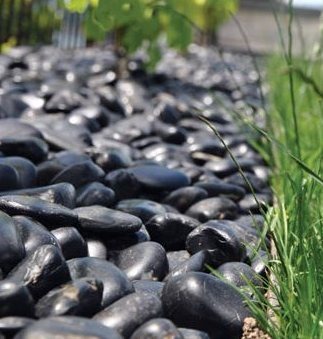
These polished pebbles are excellent for driveways and walkways, where they are typically used as mulch in interior or exterior garden beds. They can be found in a variety of colors, giving them a distinctive look that is also appealing. Exotic Pebbles Polished Gravel are portable as a result of their size. These glossy, smooth pebbles, which range in size from 1/2 to 2-1/2, have an elegant appearance. Hose off any dirt, debris, or grass clippings from these tough pebbles to maintain their appearance.
11. Crushed Stones (Gravel)
_11_11zon.webp)
Although landscaping gravel and crushed stones may appear to be the same thing at first glance, there is actually a significant distinction between the two.
While crushed stones are typically made using machinery created by humans, such as in quarries when the machinery is cutting larger rocks, gravel is produced naturally. These quarrying byproducts are then collected for sale and application in building and landscaping.
The visual distinction between crushed stones and gravel is also clear.
Crushed stones can have more angular sides while naturally occurring gravel often has rounded edges because it is typically made from waterborne sediment. They were probably made this way, which is why.
Read More: How to Clear Land - Land Clearing Techniques
Rock Mulch Vs Wood Mulch
Your garden bed or flower bed both need mulch. Which is better for mulch, rock or wood? Both are widely used and favored by garden experts and homeowners alike.
Let's look at what distinguishes them and how they differ.
Rock Mulch
Rock mulch, also known as stone mulch, includes materials like granite, lava rock, quartz, and pea gravel. Mulch works well as a border for walkways, driveways, and areas around structures.
Landscape stone doesn't decompose, in contrast to bark mulch. It doesn't need to be replaced as a result, saving you time and money over time. The risk of fungi growth is reduced because this decorative ground cover won't hold onto moisture. However, weed control is their biggest benefit.
There are a few negatives to take into account. For instance, because rocks don't decompose, they don't supply nutrients. Additionally, it is heavier than other kinds of mulch, making it more difficult to move.
Wood Mulch
It is also referred to as bark mulch and is the most widely used kind of mulch available. Its color is a reddish-tan. It is constructed from tree bark, as the name would imply.
Most frequently used for temporary purposes, bark mulch is less expensive. It also has the nutrients that plants require and has a natural appearance because it is made of wood.
There are a few negatives. Bark doesn't last very long and doesn't look good when it ages. This kind of mulch is not advised if you live in an area where wildfires are common because it is also flammable.
What Are the Best Rocks for Rock Landscaping?
Even when we have a list of various stone types in front of us, it can be challenging to decide which rocks will make the best landscaping stones. To be of assistance, Edenapp has selected a small number of rocks from the lengthy list mentioned above.
- Gold Path Decomposed Granite is quite affordable and useful for a variety of tasks.
- Choosing Rainforest River Rocks will greatly improve the water features.
- Large landscapes benefit greatly from the addition of boulders.
- Exotic Pebbles Polished Gravel - Include these rocks in your garden for a classy appearance.
What Factors Should Be Considered before Choosing Rocks for Landscaping?
Given the various characteristics, uses, price points, variety of textures, and specific types, selecting the right rocks for your landscape, yard, or garden can be difficult but also tricky. Through the list that has been optimized below, Edenapp has made it simple for you to choose.
Which Type of Rock for Landscaping is Budget-friendly?
Some of the rock types for landscaping that are quite affordable because of their price range of $20 to $40 include river rocks, gray pea gravel, and gold path decomposed granite. Pebbles and boulders from Mexican beaches are also quite expensive, even when they are of the highest quality. Boulders are expensive given their size and uses, whereas Mexican beach pebbles are expensive due to their appearance and texture.
Weight
Considering that weight affects where rocks are placed, it can be a crucial consideration when choosing rocks. For filling in tiny spaces that need to be sculptured, lightweight rocks are perfect. Additionally, due to their portability and ease of movement, they work best on patios. On the other hand, medium-weight rocks are better for less re-sculpting projects and provide good coverage. While covering large areas, heavyweight landscape rocks are fantastic. It is important to remember, though, that these large rocks are not typically used on high ground.
Texture
When rocks are the main feature and focus of your landscape, their texture matters. Smooth, rough, and irregular textures are all present in rocks. Rocks with a smooth texture are typically used for walkways, entryways, near water features, or in areas with high traffic. The uniform appearance of the smooth texture is reflected in its ability to make one feel at ease. On the other hand, unpolished rocks give the gardens a natural, rustic appearance.
Size
The size of the rocks directly relates to the purposes you need them for. Your desire to add detail and coverage to your landscape will determine the size. And the function determines the coverage. If you have a small garden, small rocks will work just fine, but if you need to fill a large area, large rocks will work wonders..
Function: Given that the topic of function is being covered here, it is crucial to remember that a rock's many applications are important when it comes to enhancing one's landscape or using rocks for rock landscaping. While some landscaping stones can reduce soil erosion, other stones have other benefits like good drainage, weed control, and even durability.
Color
Given your existing landscape features and designs, choosing the colors of rocks is simple. While you can select rocks that are all the same color to intensify your garden, contrast colors can also work wonders if you like to mix and match. Few colors can help you retain sunlight, but black rocks can do so by holding onto moisture, which in some climates can encourage the growth of algae.
How to Use Landscaping Rocks?
You may not be aware of the crucial guidelines that must be followed for the efficient use of landscaping rocks if you are a beginner or inexperienced landscaper. Take a look at the list below to understand the required steps.
- Examine the location where you plan to install the landscaping rocks. To determine which kind of landscaping rocks will provide the best value in terms of cost and aesthetics, consider additional features and aspects such as drainage systems or water features.
- Grass clippings and weeds should be removed from the site. Make sure to remove the weeds by the roots. If not done correctly, mulch will end up growing under the rocks. This is done to level your decorative rocks with the surrounding terrain.
- Make sure the soil or surface holding your landscaping rocks isn't too soft. If the soil is too soft, think about going a little deeper. If you believe that excessive digging will result in an uneven surface with your decorative rocks, you can also add a layer of fresh, higher-quality soil.
- To effectively prevent weed regrowth beneath your chosen landscaping rocks, think about laying down a layer of landscape fabric. To avoid any drainage issues, make sure the fabric allows water to pass through.
- Installing a strip of rubber or plastic landscape edging will help to reduce the likelihood that your decorative rocks will be knocked out of place, especially during periods of intense rain or storms.
Now you can plant carefully and lay your landscaping rocks according to your needs and desired locations.
Conclusion
It's an art form to create a landscape. Your outdoor area would look fantastic with some decorative rock added. The price of most rocks is not very high. Rocks are an inexpensive outdoor home improvement option that will improve the appearance of your house.
Rocks will always be available. Rocks can be found in a wide variety of sizes, shapes, and colors. They serve as outdoor focal points for your property and enhance the landscape with their natural beauty.
As opposed to mulch, rocks give your landscape a more natural feel and a sense of permanence, such as when you use them to pave garden paths. The different types of rocks include lava rocks, granite gravel, and brick chips. Your landscape project's use of rocks will enhance its natural appearance.
Get in touch with a curb appeal expert if the idea of adding rocks appeals to you but you're unsure of the kinds of rocks you ought to use. They could advise you on which to use and assist you in locating the landscaping rocks for your home because they are professionals.
Frequently Asked Questions (FAQ)
What is the Cheapest Type of Landscaping Rock?
Crushed granite, pea gravel, and river rocks are the three most affordable landscaping stones. Any outdoor space, including garden beds and garden paths, can benefit from the use of the rock materials. Along with serving as fire pits, they also make good stepping stones.
How Do You Keep Landscaping Rocks in Place?
Rock landscaping is dependent on edging strips. The strips have the ability to stop rocks from shifting. Crushed gravel and smaller landscaping stones can be kept in place by using edging strips.
Is Rock Or Mulch Better for Landscaping?
When it comes to weed prevention, rocks are more effective than mulch at suffocating weeds. Low-water gardens and landscapes benefit from stone cover.
However, because they can retain more heat than mulch, stones aren't the best choice for garden areas exposed to direct sunlight.
How Do You Keep Landscape Rocks from Washing Away?
The soil of the flowerbed should be covered with a single layer of landscaping fabric or plastic. On top of the fabric or plastic, place the tiny rocks. The rocks are kept from burying themselves in the ground by the fabric or plastic.
The ability of landscaping fabric to keep weeds from growing in between the rocks is another benefit. Stones can be given traction by landscaping fabric.
Should I Put Landscape Fabric under Rocks?
Rocks and soil are frequently separated from one another using landscape fabric. Instead of digging the stones out of the ground when it's time to remove them, you can simply shovel them off the fabric. In between the tiny stones, the fabric also prevents weeds from growing.
Latest Updated
- Benefits of Bugleweed - 7 Science-backed Health Benefits
- Bugleweed Dangers & Side Effects - Is It Poisonous?
- How to Plant Evergreen Trees - What You Should Know
- When to Plant Evergreens - Grow Guide for Evergreen Trees
- 12 Wonderful Evergreen Shrubs for Your Garden
- 12 Popular Evergreen Plants with Pictures for Beginners
- When And How To Prune A Lilac Bush Like a Pro
- How to Grow & Care for Lilac Vine (Hardenbergia Violacea)
- Japanese Lilac Tree (Syringa Reticulata) Care & Propagation Guide
- Shumard Oak Pros and Cons - What to Know
Popular Articles
- Winter maintenance of Antirrhinum Majus
- How to Grow Terminalia Mantaly Tree
- How to Grow and Care for Crossostephium Chinense
- How to grow Antirrhinum Majus in spring
- Peristeria Elata (Dove Orchid) Profile: Info & Care Guide
- Underwatered Snake Plant (Sansevieria Trifasciata) - Signs And How To Fix
- How to Care for Brazilian Jasmine Plant (Mandevilla Sanderi)
- How to Grow & Care for Graptopetalum Purple Delight in Summer
- Rosa Chinensis (China Rose): Plant Growing & Care Tips
- How to Care for Baby Sun Rose (Aptenia Cordifolia)